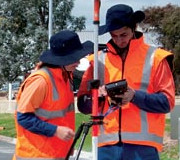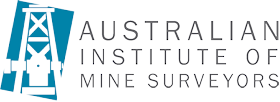 Due to queries regarding storage and archiving of field notes, BOSSI is considering developing guidelines for the preparation, storage and archiving of field notes and invites the profession to make submissions.
Due to queries regarding storage and archiving of field notes, BOSSI is considering developing guidelines for the preparation, storage and archiving of field notes and invites the profession to make submissions.
[From Michael Spiteri, BOSSI Registrar]
Field notes come in various forms and formats and the preparation of these documents are an integral part of any survey. Field notes are mostly used by surveyors as the basis for the preparation of further hard copy plans and electronic data for their clients or submission to local government or government departments. Field notes are also a very handy reference to check how the survey was carried out and what measurements and facts were recorded. They are also a historical snap shot in time which may be beneficial to future surveyors.
Existing Requirements for Land Surveys
Division 6 of the Surveying and Spatial Information Regulation 2012 deals with the requirements for the making, recording, signing, and archiving of field notes for land surveys. In particular it requires surveyors to:
• Prepare field notes in a neat, precise, complete and readily intelligible manner in accordance with the usage of surveyors.
• Record all facts, readings and observations immediately after they are ascertained.
• Keep an archive of all field notes, with indices and cross-references set out in a manner that facilitates the preparation of a complete and accurate survey plan, and all other information and documentation relevant to those field notes.
• Include the nature and position of any survey mark or monument found by the surveyor and the nature of any survey mark (other than a peg) placed by the surveyor.
• Retain an electronic copy (in the same form as the recording) and a copy of the reduced and formatted data in a manner that facilitates the preparation of a complete and accurate survey plan if field notes have been recorded in whole or in part by electronic methods other than GNSS methods.
• Retain an electronic copy of all recorded data and a copy of the reduced baselines or positional in a form that facilitates the preparation of a complete and accurate survey plan if a survey has been recorded in whole or in part by GNSS methods.
• Clearly indicate the datum line of the survey and the origin of the orientation adopted in their field notes.
• Record the time and date and the latitude of the relevant station, together with full particulars of all observations for astronomical observations made in the course of a survey in their field notes.
• Record the names of estates, houses, roads, rivers, creeks, lakes and the like, and house numbers, as far as they are material to the survey and ascertainable by the surveyor in their field notes.
• Personally sign and date each page or sheet of the field notes and (in the case of a survey recorded by electronic means) each page or sheet of the reduced and formatted data for all surveys that have been performed by the surveyor personally or under the surveyor’s supervision.
• Ensure the date when the work recorded on it was performed appears on the field notes and that the surveyor is satisfied that the notes are accurate before signing each page or sheet.
• Observe and record all angles and bearings in degrees, minutes and seconds, and all bearings must be reckoned and expressed clockwise from zero to 360 degrees.
The Regulation is silent on the length of time field notes should be kept and how to deal with IT hardware/software upgrades which makes keeping electronic filed notes difficult to retrieve and use. Generally, unless a contrary legal agreement exists, a surveyor is personally responsible for the retention and archiving of their own field notes.
Existing Requirements for Mining Surveys
The making, recording, signing, and archiving of field notes for mining surveys is governed by the Survey and Drafting Directions for Mine Surveyors 2015 (NSW – Mines). In particular it requires surveyors to:
• Systematic and reasonable care is taken by the Nominated Mining Surveyor for the safe preservation of all survey records required under the Directions.
• Survey records for control surveys, subsidiary surveys, secondary surveys, elevation surveys, and surface movement and subsidence surveys are kept at the survey office for the mine.
• Survey records shall be maintained manually in field book or other stable material, electronic text or image or other means not visually perceptible without the aid of a machine or other device. Where a machine or other device is required to access the stored data the Nominated Mining Surveyor shall ensure the data is regularly updated to a media and format that is currently available.
• Survey records are to be permanently recorded and maintained in accordance with ICSM (2007) SP1 (version 1.7) and the Directions.
• All survey books will be maintained in good order and shall include the mine name, catalogue number, the seam or level name to which the book refers for underground mines, and consecutive index number permanently marked on the cover and the inside title page.
• Procedures for entries into survey books include:
o All survey observations and measurements shall be recorded at the time of the survey.
o In event of alteration of a mistake there shall be no erasure. The erroneous entry should be struck through and the correction written above.
o The datum line of the survey and the azimuth adopted shall be clearly indicated.
o Lengths shall be entered at the time they are measured. Where appropriate, corrections shall be noted and the lengths deduced there from shall be clearly indicated.
o Bearings and distance from reference marks must be clearly shown.
o Reference marks and bench marks placed by the surveyor shall be so noted and the positions and descriptions thereof shall be shown by a sketch in the appropriate book.
o Lines remeasured shall be so specified and original distances and bearings shown.
o The Nominated Mining Surveyor shall sign the field book that the work shown therein was performed by the Nominated Mining Surveyor or under the Nominated Mining Surveyor’s supervision and indicate the date on which the work was signed.
• Where surveys are recorded in electronic form the information to be recorded shall be consistent with that required for survey books. A complete and separate duplicate of such records shall be preserved on paper or disc or other permanent electronic medium.
• The Nominated Mining Surveyor of any mine, upon the request of the regulator, shall make available, in a format specified by the regulator all or any survey records or certified copies thereof.
• Upon suspension of a mine all mine survey records relevant to the preparation of the Mine Survey Plans shall be prepared by the Nominated Mining Surveyor for submission to the Department. A guidance document shall be included detailing file structure, formats, descriptions and other necessary information to enable additional end users to interrogate the information.
• On closure of the mine these records shall be submitted to the regulator for retention.
Archiving of field notes in public and private sector
The retention, archiving and disposal of field notes by government surveyors are governed by the State Records Act 1998. For government organizations, any record dating prior to 1940 cannot be destroyed without first reference to State Records. If records have to be retained indefinitely, they become a State Archive. The organisation needs to have a current Functional Disposal Authority: no record can be destroyed without one. If records are stored by the organisation itself, they must be subject to appropriate temperature and humidity controls.
The private sector is covered by legislation such as the Corporations Act and the Tax Act, which provide a record retention period of 5 to 7 years. There is no requirement for long term storage of field notes. However, there is a presumption that surveyors are responsible for their work until their Estate has been declared. A government instrumentality can enter into a formal arrangement with a private company to retain the private company’s records.
Recommendations being considered by BOSSI
The Board has recently discussed this matter and is considering the following recommendations for inclusion in proposed guidelines for preparation, storage and archiving of field notes:
• Field Notes should be kept indefinitely as you may need to refer back to them when answering requisitions, investigations undertaken by the Board or a legal case.
• Scanned copies of hard copy field notes are an acceptable format to store field notes in the long term. Legal advice obtained by the Board is that a scanned copy would be admissible in court. Surveyors should ensure that the format that scanned copies are kept in a format that is universally recognised (such as PDF, JPEG, TIFF) and makes retrieval easy. This may mean updating formats in the long term. Field notes should be scanned at a resolution that ensures the integrity of the original field notes is not lost.
• Ensure that old electronic field notes can be still opened with the latest hardware and software. This may involve converting old data into new formats which can still be opened and read at a later date.
• Due to the importance of field notes, Surveyors should consider the ownership of their field notes when they have left their employment, retired or died. It is recommended that arrangements for ownership and access to field notes be considered at the commencement of employment and not at the end of employment. Surveyors should also consider making arrangements for the dealing with their plans such as requisitions. It is good professional practice to make arrangements to allow other registered surveyors to deal with your plan if you have left employment, retired or died. Typically these authorisations are given to the registered surveyors within the firm which you were employed. These authorisations should be recorded at Land and Property Information.
• For long term safe keeping and the use of future generations, surveyors should consider donating their field notes to a library. Field notes should not be destroyed if possible.
Submissions
BOSSI would be very interested in the views of the profession on this matter.Please send submissions to the BOSSI Office, contact details are shown below.
Deadline for submissions is Friday 30 September 2016.
BOSSI Contact Details
The BOSSI Office can be contacted as follows:
P: PO Box 143 BATHURST NSW 2795
T: (02) 6332 8238
E: bossi@lpi.nsw.gov.au
Michael Spiteri
Registrar








